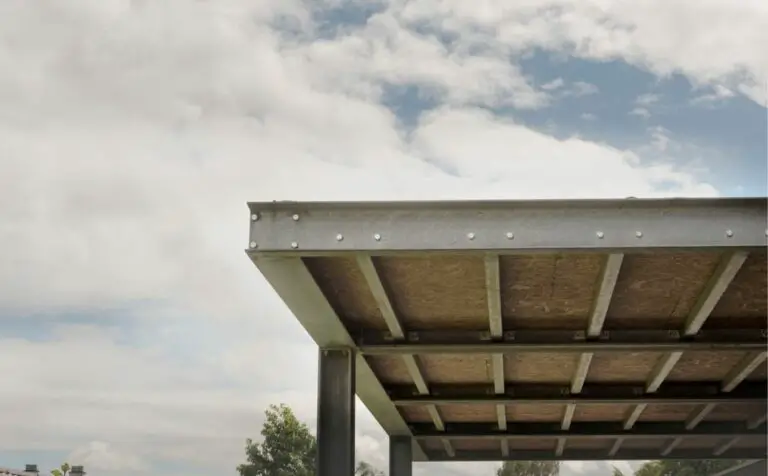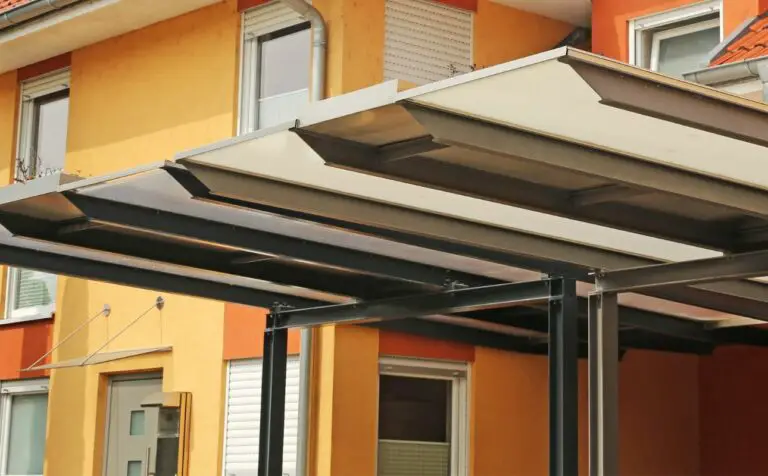Can Carport Be On The Setback? (Helpful Tips)
Imagine you are a car owner looking to add a new carport to your property. You have the perfect spot in mind, but it happens to be on the setback that part of your land where buildings and other structures are not allowed. Should you proceed with your plans or seek an alternative location?
This is a common dilemma faced by many homeowners and one that requires careful consideration of local zoning laws and regulations, as well as potential impacts on neighboring properties.
We will discuss zoning laws and regulations that govern setbacks in different areas, evaluate potential impacts on neighboring properties and obtain necessary permits and approvals from relevant authorities before construction begins.

Understand Your Local Zoning Laws and Regulations
Familiarizing oneself with the local zoning laws and regulations is imperative for property owners, as a failure to do so could result in potential legal ramifications that may ultimately impede one’s ability to utilize their property in a manner they deem fit.
Zoning restrictions, setbacks, and allowances are some of the key elements that homeowners need to be aware of when planning the installation of a carport. It is important to note that setback requirements vary from one jurisdiction to another, which means that what may be permissible in one area may not necessarily apply in another.
Failure to comply with zoning regulations can lead to potential legal issues, fines and penalties. Therefore, before installing a carport on your property, it is essential to consult with local authorities or seek professional guidance from experts who can help you navigate through the zoning regulations specific to your location.
Consider the Size and Design of Your Carport
When considering the size and design of your carport, it is important to measure the available space to ensure that it can accommodate your needs.
Additionally, determining the design and style that best fits your needs will require careful consideration of factors such as the number and type of vehicles you plan to park under the carport.
Measure the Available Space
Assessing the area of land available for construction purposes is a crucial step in determining the feasibility of building any structure, as it involves measuring the space that can be used without violating any local zoning laws or regulations.
When considering building a carport, it is important to take into account setback requirements and carport dimensions. The setback requirements specify how far from the property line you must build your carport. It varies from location to location, so it’s important to check with your local zoning office before beginning construction.
Once you know what setbacks are required, measure the available space on your property and determine if there is enough room for a carport that fits your needs. Consider factors such as vehicle size and number, as well as any other intended use for the structure.
Determine the Design and Style That Best Fits Your Needs
Budget considerations are critical, as they will influence the materials and features that can be included in the structure.
Additionally, there are many aesthetics options available, including different roof styles, siding types, and color choices that can complement or contrast with existing structures on the property.
It is also essential to consider how the carport will be used and what type of vehicles it will accommodate to determine appropriate sizing requirements.
Finally, personal preferences must be taken into account; after all, this is a structure that you will use and see every day. Once these factors have been identified and evaluated, it is time to explore different designs and styles that meet your unique needs.
Evaluate Potential Impacts on Neighboring Properties
When evaluating potential impacts on neighboring properties for carports, there are several factors to consider. Here are some key points to assess:
- Visual Impact: Carports can alter the visual aesthetics of a neighborhood. Assess whether the carport design complements the surrounding properties or if it stands out in a way that may impact the overall appearance of the area.
- Privacy: Determine if the carport will compromise the privacy of neighboring properties. For example, if the carport overlooks adjacent yards or windows, it may invade the privacy of residents. Consider the orientation, height, and location of the carport in relation to neighboring homes.
- Shadow and Light: Analyze how the carport will affect natural light and shadow patterns for neighboring properties. Consider the direction of the sun and whether the carport may cast shadows on neighboring yards, gardens, or solar panels.
- Noise: Evaluate whether the construction or use of the carport may generate excessive noise that could disturb neighboring residents. This includes noise from installation, maintenance, and any activities associated with the carport.
- Property Value: Assess how the presence of a carport might impact the value of neighboring properties. While carports can be convenient for homeowners, they may also affect the perceived value of nearby homes. Consider the preferences of potential buyers or renters in the area.
- Structural Considerations: If the carport is located close to neighboring properties, it’s important to evaluate any potential structural impact. Ensure that the construction of the carport does not compromise the stability or integrity of nearby structures.
- Legal and Zoning Regulations: Check the local regulations and zoning ordinances regarding carports. Ensure that the carport meets all the necessary requirements, setbacks, and height restrictions, and doesn’t violate any codes or regulations that could affect neighboring properties.
Obtain Necessary Permits and Approvals
Follow the Required Procedures and Guidelines, as these will outline the necessary steps for obtaining permits and approvals, such as submitting plans and paying fees. Failure to comply with local rules can result in costly fines or even legal action, emphasizing the importance of adhering to all regulations during the permit process.
Consult with Local Authorities
Local authorities must be consulted to determine the appropriate location for structures on a property, ensuring compliance with zoning regulations and promoting a safe and aesthetically pleasing environment for all members of the community.
Before constructing a carport in the setback, check building codes to see if it is allowed in your area. The local authority can also inform you of any regulations that may affect the placement of your carport, such as setbacks or height restrictions.
Follow Required Procedures and Guidelines
When considering whether a carport can be built on a setback, it is important to first determine the possible setbacks outlined by local authorities. Once this is established, alternative options such as reducing the size of the carport or moving it closer to the main dwelling may need to be explored in order to comply with setback regulations.
It is also essential to obtain any necessary permits and approvals before beginning construction. Failure to do so can result in costly fines and even legal action. To ensure that these procedures are followed correctly, it is recommended that a qualified contractor be hired for the project.
Hire a Qualified Contractor
Engaging the services of a certified builder with extensive experience in complying with local building codes and regulations is essential to ensure that any construction project adheres to safety standards and legal requirements.
When considering hiring a contractor for your carport installation, it is important to take into account their qualifications, pricing comparison, reputation, and references.
A qualified contractor should possess valid licenses and insurance coverages to ensure that they are capable of delivering quality workmanship while complying with all applicable laws and regulations.
It is also wise to compare prices from different contractors before making a final decision. This helps you find the most affordable option without compromising on quality or safety.
The Bottom Line
Local zoning laws and regulations, size and design of the carport, potential impacts on neighboring properties, and obtaining necessary permits and approvals. It is crucial to understand these factors before constructing your carport to avoid any legal issues or conflicts with neighbors.
For instance, a hypothetical case study could be that of a homeowner in California who built a carport without obtaining the necessary permits and approvals. The city authorities issued him a notice to demolish the structure due to its violation of zoning laws.






